285
社区成员
 发帖
发帖 与我相关
与我相关 我的任务
我的任务 分享
分享| The Link Your Class | https://bbs.csdn.net/forums/MUEE308FZU202201?category=0 |
|---|---|
| The Link of Requirement of This Assignment | https://bbs.csdn.net/topics/608734907 |
| The Aim of This Assignment | Lab1_2_solution |
| MU STU ID and FZU STU ID | MU:20124732_FZU:832001124 |
-> My Github link of this project: https://github.com/fish-Rita/EE308FZ-Lab1-2
目录
Part2: Description of problem-solving ideas
Part3: Design and implementation process
Part6: Coverage optimization & Test performance
| Personal Software Process Stages | Estimated Time/minutes | Completed Time/minutes |
|---|---|---|
| Planning | 30 | 30 |
| Estimate | 20 | 25 |
| Development | 75 | 30 |
| Analysis | 90 | 50 |
| Design Spec | 65 | 40 |
| Design Review | 30 | 30 |
| Coding Standard | 25 | 30 |
| Design | 30 | 30 |
| Coding | 48 | 90 |
| Code Review Planning | 40 | 40 |
| Test | 60 | 25 |
| Reporting | 35 | 40 |
| Test Report | 70 | 80 |
| Size Measurement | 30 | 40 |
| Postmortem&Process Improvement | 30 | 30 |
At the beginning, I decided to use C++ to solve the Lab as I am more skillful at C++. After understanding the requirements of the problem, I started to think about a good general idea: The topic roughly requires us to complete 4 levels of tasks.
First of all, we must input preprocess files, and then complete the realization of Lab functions. Once we have established this idea, we can start writing code.
My thoughts about the organiztion and stucture of codes is show below by using 4 pictures of mind mappings:
We need to input the sample files, use substr to cut on the string and pushback it to the vector as the course of preprocessing the strings, then I compare this string we interested in with the keywords using interation, if it is, then do incresement.
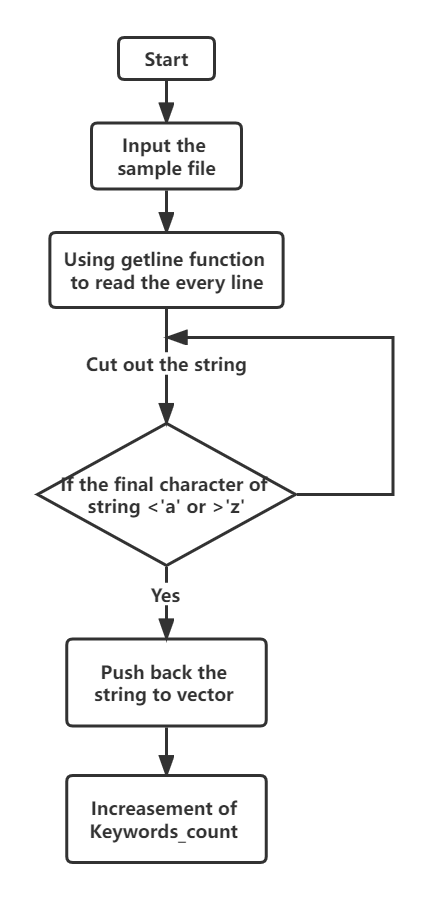
Iterate to find the switch and case until the next switch or end of stored vector, do the increasement. After gaining the number of "switch" structures, I use a loop to find the number of case until the next switch or completion of iteration.

Count the total num of if ,else,else if, and check if inside if, then check whether the next is else or the end of completion, during that I set some flags, then calculate the final results.
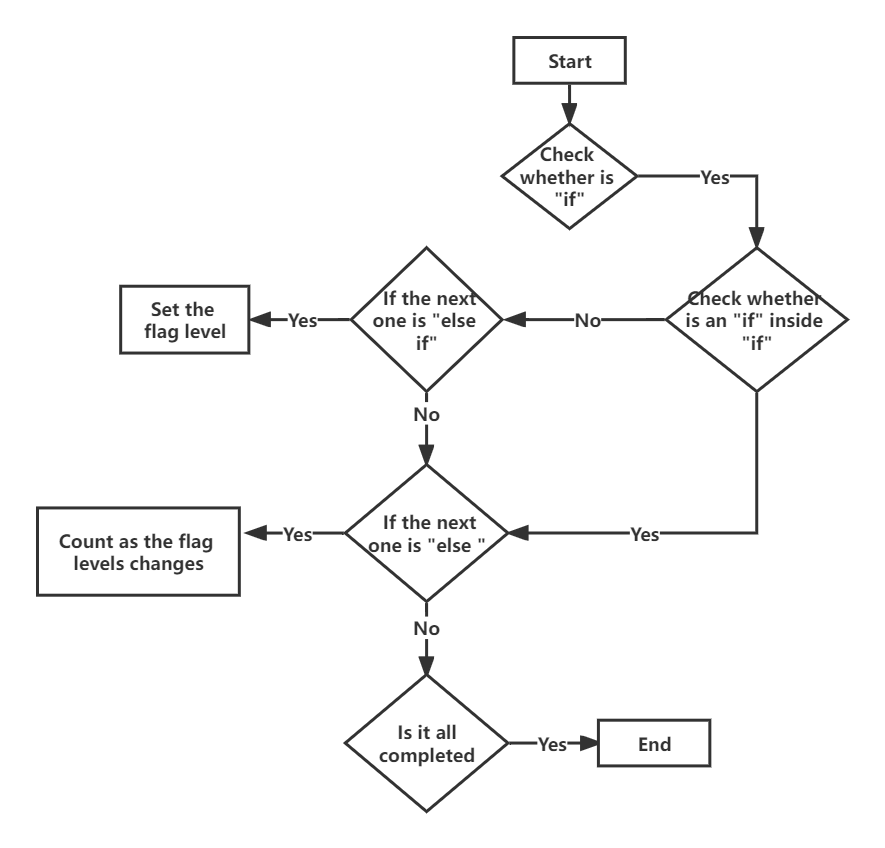
Header file and definitions
#include<iostream>
#include<fstream>
#include<vector>
using namespace std;
int main()
{
string text;
vector<string> nums;
string filename;
string keywords[33]={"auto", "break", "case", "char", "const", "continue",
"default", "do", "double", "else", "enum", "extern", "float",
"for", "foto", "if", "int", "long", "main", "register", "return", "short",
"signed", "sizeof", "static", "struct", "switch", "typeof", "union",
"unsigned", "void", "volatile", "while"};
string ifelsekeywords[3]={"else if","if","else"};
int keywdcnt[33] = {0}, ifelsekeywdcnt[3] = {0},keyword_count=0,switch_count=0,case_count=0,elseifcount=0;
vector<int> casenum;
vector<string> ifelsearr;
int ifelsecount=0, ifelseifcount=0, if_num=0, elseifnum=0, else_num=0;
choose the level and open the file
ifstream inFile;
cout <<"Please choose the level(1,2,3,4): ";
int level;
cin>>level;
cout << "Please input the file path:";
cin >> filename;
inFile.open(filename); //open the file sample.cpp
if(inFile.fail())
{
cout<<"The file was not successfully opend"<<endl;
return 0;
}
(1) level 1: count the total num of keywords
//level 1
while (getline(inFile,buf))
{
cout << buf << endl;
int i = 0, j = 0;
while(i < int(buf.size()) && j < int(buf.size()))
{
if (buf[i] < 'z' && buf[i] > 'a')
{
if (buf[j] > 'z' || buf[j] < 'a')
{
string s = buf.substr(i, j-i);
nums.push_back(s);
for (int k = 0; k < 33; k++) {
if (s == keywords[k]) {
keyword_count++;
// keywdcnt[k]+=1;
}
}
i = j+1;j=i;
}
else
j++;
}
else
{
i++;j=i;
}
}
}
if(level>=1)
cout<<"total number of keywords is: "<<keyword_count<<endl;
(2) level 2: count the total num of switch and case
//level 2 & 3
if(level>1)
{
for(int i=0;i<int(nums.size());i++)
{
if(nums[i]=="switch")
{
switch_count+=1;
for(int j=i+1;j<int(nums.size());j++)
{
if (nums[j]=="case")
case_count+=1;
else if(nums[j]=="switch" )
{
i=j-1;
casenum.push_back(case_count);
case_count=0;
break;
}
else if(j==int(nums.size()-1))
{
i=j;
casenum.push_back(case_count);
break;
}
}
}
}
cout<<"total number of switch is: "<<switch_count<<endl;
cout<<"total number of case is: ";
for(int i = 0;i < casenum.size(); i++)
{
cout<<casenum[i]<<" ";
}
cout<<endl;
inFile.close();
}
(3) level 3&4 : count the num of if-else, if-elseif-else
//level 3&4
if(level>2)
{
inFile.open(filename);
if(inFile.fail())
{
cout<<"The file was not successfully opend";
return 0;
}
while (getline(inFile,buf))
{
for(int i=0;i<3;i++)
{
if(int(buf.find(ifelsekeywords[i]))!=-1)
ifelsekeywdcnt[i]=1;
else
ifelsekeywdcnt[i]=0;
}
if(ifelsekeywdcnt[1]==1 && ifelsekeywdcnt[2]==1)
{
ifelsekeywdcnt[0]=1;
ifelsekeywdcnt[1]=0;
ifelsekeywdcnt[2]=0;
}
for(int i=0;i<3;i++)
{
if(ifelsekeywdcnt[i]==1)
ifelsearr.push_back(ifelsekeywords[i]);
}
}
for(int i=0;i<int(ifelsearr.size());i++)
{
if(ifelsearr[i]=="if")
if_num+=1;
else if(ifelsearr[i]=="else if")
elseifnum+=1;
else if(ifelsearr[i]=="else")
else_num+=1;
}
for(int i=0;i<int(ifelsearr.size())-1;i++)
{
if(ifelsearr[i]=="if" && ifelsearr[i+1]=="else")
{
ifelsecount+=1;
if_num-=1;
else_num-=1;
}
else if(ifelsearr[i]=="else if" && ifelsearr[i+1]=="else")
{
if_num-=1;
else_num-=1;
for(int j=i;j>0;j--)
{
if(ifelsearr[j]=="else if" && ifelsearr[j-1]=="else if")
{
elseifcount+=1;
}
else
{
ifelseifcount+=1;
elseifnum-=(elseifcount+1);
elseifcount=0;
break;
}
}
}
}
ifelseifcount+=elseifnum;
if_num-=elseifnum;
ifelsecount+=if_num;
if(level>2)
cout<<"total number of if-else structure is: "<<ifelsecount<<endl;
if(level>3)
cout<<"total number of if-else if-else structure is: "<<ifelseifcount<<endl;
}
return 0;
}
Testing code
#include <stdio.h>
int main(){
int i=1;
double j=0;
long f;
switch(i){
case 0:
break;
case 1:
break;
case 2:
break;
default:
break;
}
switch(i){
case 0:
break;
case 1:
break;
default:
break;
}
if(i<0){
if(i<-1){}
else{}
}
else if(i>0){
if (i>2){}
else if (i==2) {}
else if (i>1) {}
else {}
}
else{
if(j!=0){}
else{}
}
return 0;
}
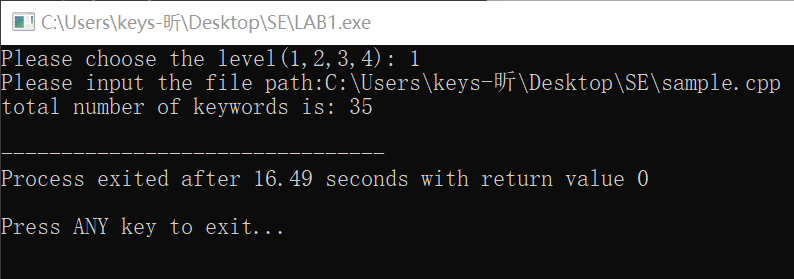
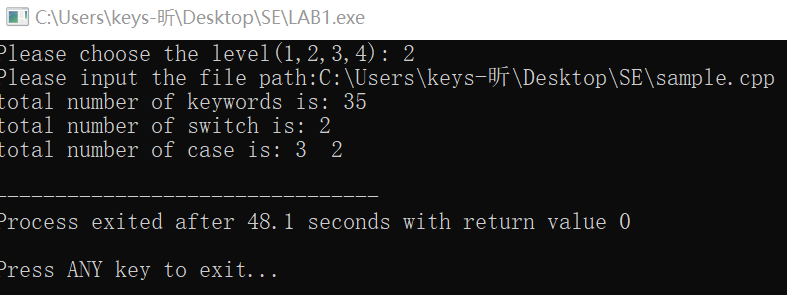

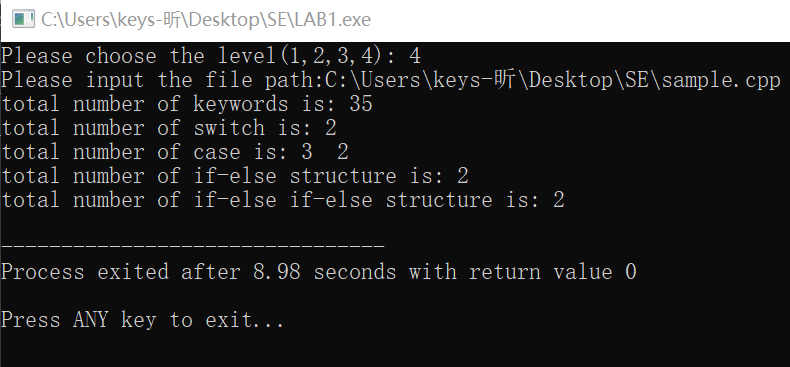
In unit testing, code coverage is often used as a measure of how good the test is, or even as a measure of how well the test task is done. For example, code coverage must be 80 or 90 percent.
To perform code coverage statistics, simply execute the code being counted through coverage's run parameter. I installed coverage in Vscode via PIP.
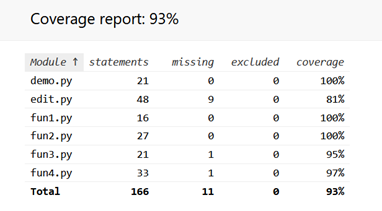
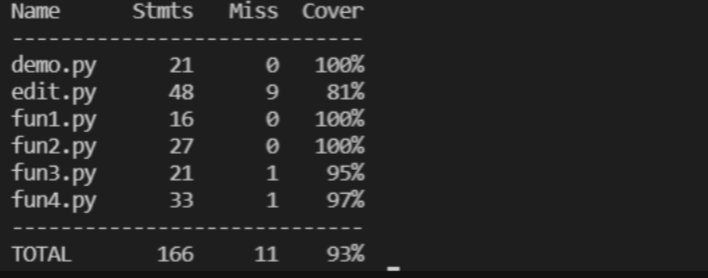
The rate of cover is highly as 93% as above, which shows the test is good.
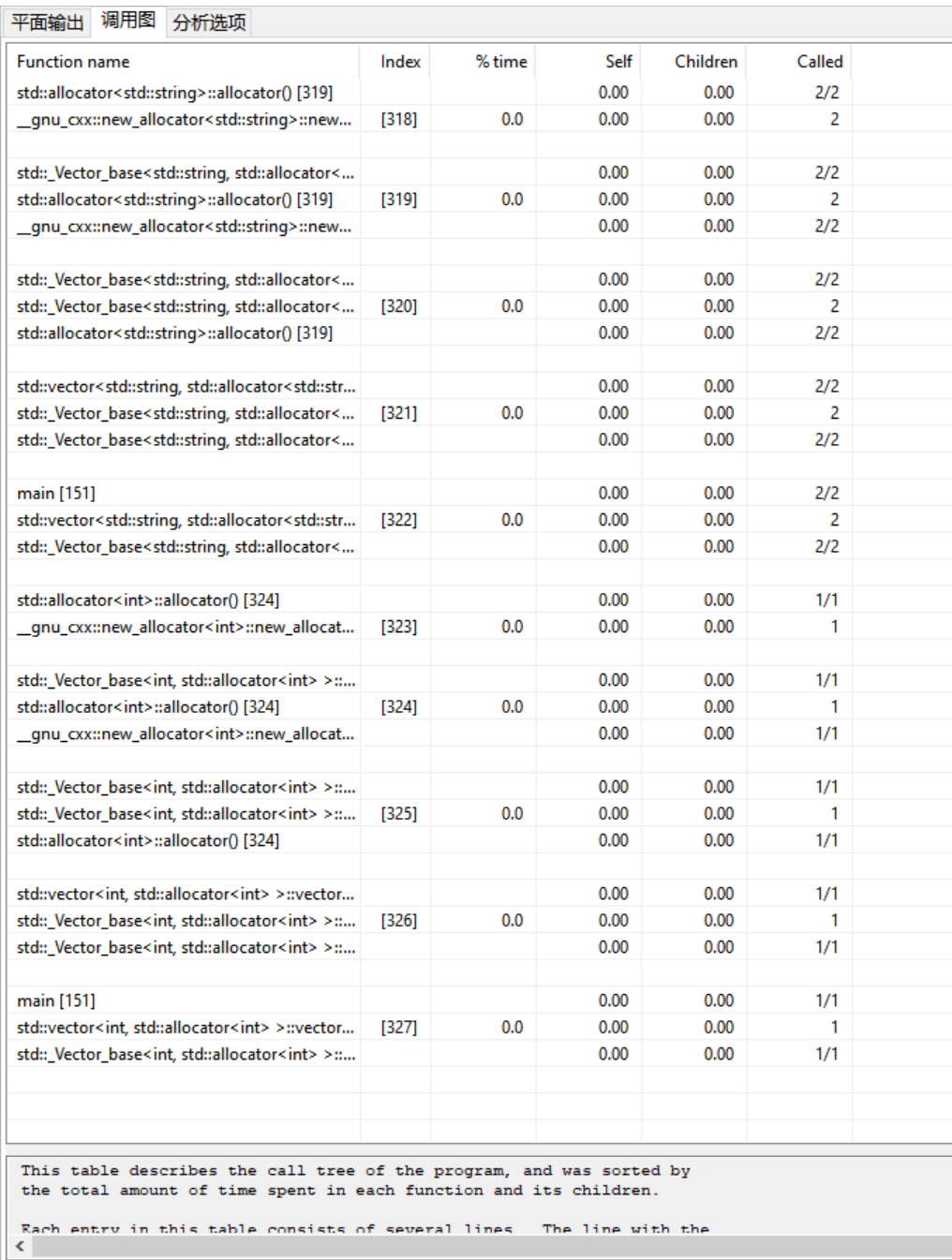
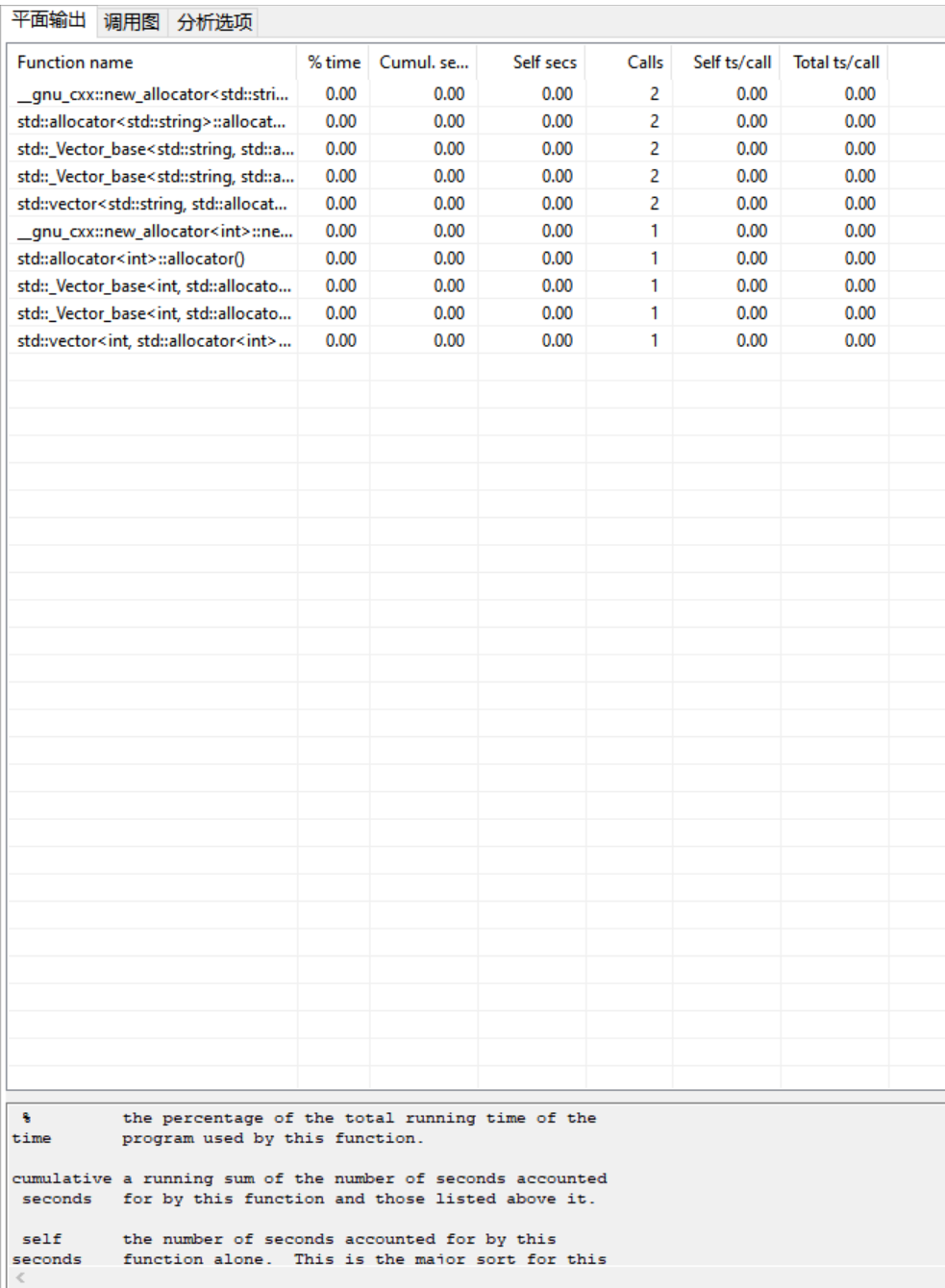
For me, this project takes much time enabling me to adjust and adapt to the complete project process. Although I think I should refresh myself in algorithm like iterate the loop and the preprosess of file, through using of the PSP meter also allowed me to better plan my time and keep my tasks running smoothly. After all. I benefited a lot from this Lab.
( a bit tired now..😭😭😭)